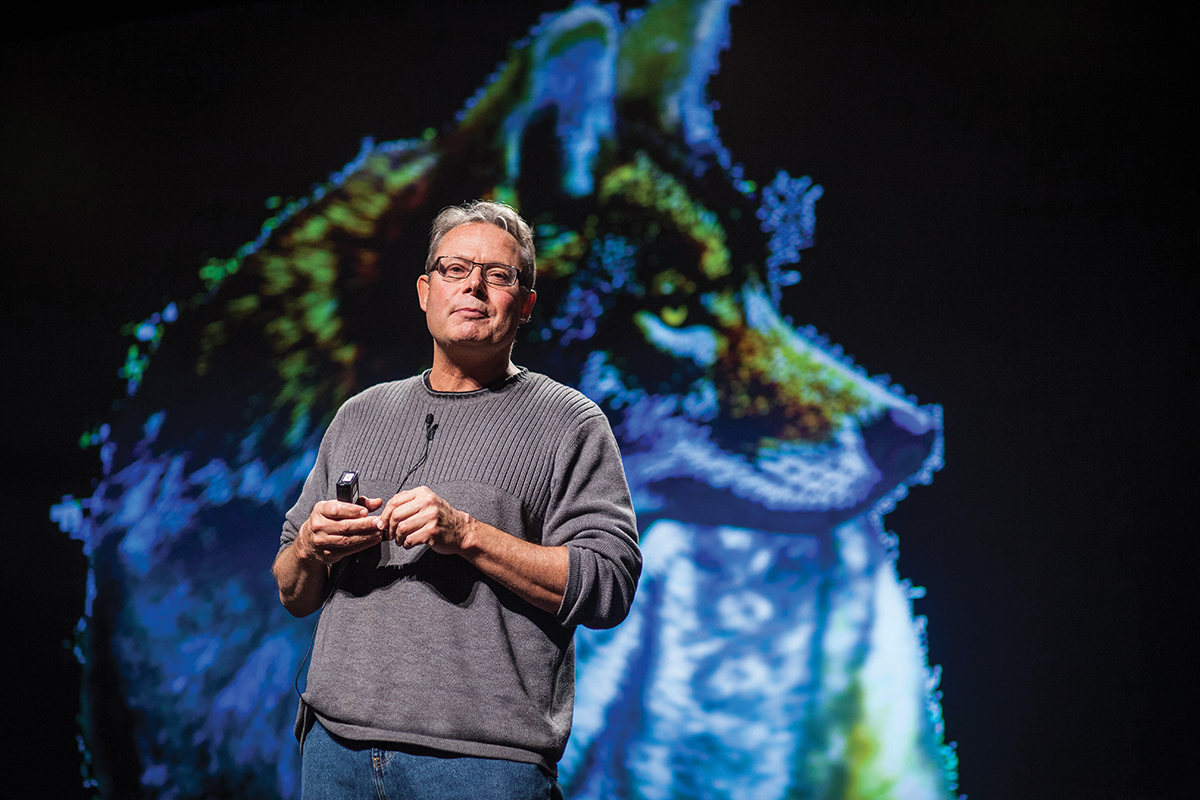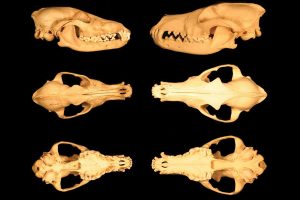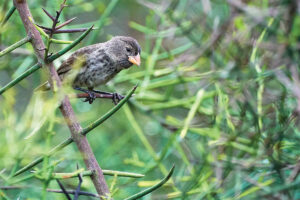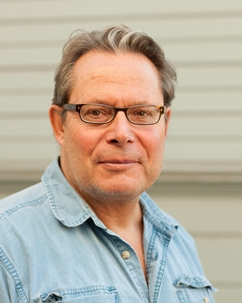He’s been described as “one of the most innovative and provocative thinkers in conservation today”—a “myth-busting scientist” who “pushes greens past reliance on ‘horror stories.’” The New York Times called him “the most prominent critic of the conservation movement from within its own ranks” for putting forth a more optimistic version of environmentalism and urging scientists to follow data, not dogma.
Peter Kareiva is the author of more than 150 scientific publications and author or editor of eight books, including a textbook on conservation science. In 2019, Kareiva was a Julian Simon Fellow at PERC, researching hybridization and reexamining assumptions about species “purity.” He is a past director of the Institute of the Environment and Sustainability at UCLA and former chief scientist at the Nature Conservancy. In 2020, Kareiva became president and CEO of the Aquarium of the Pacific in Long Beach, California. We asked him about his research on hybridization, the role of humans in conservation, and his views on the future of the field.
Q: Some of your recent work focuses on “hybridization events.” What do biologists mean when they use this term?
A: Hybridization is the process of producing offspring by mating two parents from different species. It can occur naturally—meaning without any active human assistance—or it can occur because humans facilitate it, as was the case when ranchers crossed American bison with cattle to create “beefalo.” Plant breeders have often crossed different crop varieties to produce hybrids with special properties or “hybrid vigor.” For example, Meyer lemons are the result of crossing traditional lemons with mandarin orange trees to get a larger and sweeter lemon.
While I agree that hybridization can be a threat to species and can imperil species, I would never assume this was the case without evidence.
Natural hybridization among plants has played a significant role in creating new plant species. Until recently, natural hybridization among animals was thought to be rare, but that view has changed with access to molecular genetic data. Even if new species are not created by hybridization, a less dramatic result of hybridization can be the introduction of novel genes into populations. That has been the case with eastern coyotes, which have hybridized with wolves, and as a result are larger than western coyotes and able to take down larger prey.
Q: You’ve critiqued a belief, widely held by conservation biologists, that hybridization is a threat to biodiversity. How does your perspective differ?
A: Conservation biologists have tended to assume hybridization is a threat to biodiversity for two reasons: 1) hybrid offspring may have reduced fitness, which reduces the average reproductive rate of the species in question or 2) hybridization may swamp out locally adapted and unique genotypes, and produce populations that are no longer genetically distinct. On the other hand, genomic data has also linked hybridization to adaptive radiations of groups such as Heliconius butterflies. Especially salient to a world experiencing rapid climate change, studies of evolution in contemporary time have suggested that hybridization can be essential to rapid evolution at a pace commensurate with swift environmental change. For example, there is evidence that hybridization in Darwin’s finches on the Galapagos Islands has facilitated rapid adaptive changes of beak shape over a 30-year period.
Data documenting hybridization as a cause of species extinction are extremely sparse.
While I agree that hybridization can be a threat to species and can imperil species, I would never assume this was the case without evidence. I am willing to consider a wide variety of conservation interventions that others may reject out of fear of hybridization. The dusky seaside sparrow went extinct when the U.S. Fish and Wildlife Service abandoned captive breeding. The agency abandoned the effort because the birds available to initiate the captive breeding program were not pure representatives of the species due to previous hybridization events. If it had not been abandoned, the program might have saved the species.
Q: Do conservationists need to reconsider their stance on hybrids? If so, in what ways?
A: For sure, conservationists need to reconsider their assumptions about hybridization in light of recent research findings. Data documenting hybridization as a cause of species extinction are extremely sparse. Natural hybridization is much more widespread than previously thought, and we have several examples of hybridization contributing to diversity. We also live in a world with rapid environmental change that places a premium on species adapting in the face of that change. Several recent studies document how hybridization can help species adapt rapidly in this challenging world.
Q: People sometimes talk about Yellowstone bison as being “genetically pure.” Should the bison population be glad about that? Should we?
A: Yellowstone bison are the only bison in the United States that have no cattle genes. For this reason, they are valued as the only pure bison, and the hundreds of thousands of bison outside Yellowstone are devalued because they have some cattle genes. Cattle and bison do not mate or hybridize in nature. These cattle genes in bison are a relic of early 20th century forced matings between bison and cattle intended to incorporate some beneficial bison genes into cattle.
The Neanderthal ancestry of humans is as high as 1.4 percent in Asia and 1.22 percent in America—substantially higher than the cattle ancestry in bison. Are we less human for that Neanderthal ancestry?
The “impure” conservation bison herds outside of Yellowstone all have less than 1 percent cattle ancestry. Without DNA analysis, no one can tell the difference between bison with cattle ancestry and “pure” bison that lack cattle genes. Worrying about 1 percent cattle ancestry, especially given the fact these cattle genes are gradually disappearing from one generation of bison to the next, does not make sense. One way of seeing clearly the foolishness of this obsession with pure bison is to take note of the recently discovered Neanderthal ancestry in humans. The Neanderthal ancestry of humans is as high as 1.4 percent in Asia and 1.22 percent in America—substantially higher than the cattle ancestry in bison. Are we less human for that Neanderthal ancestry?
Q: How did so many conservationists come to champion concepts such as “genetic contamination” and “genetic purity” that, when applied to humans, seem plainly abhorrent?
A: First, there is no escaping that many prominent early conservationists were racist and thought in terms of genetic purity. For example, Madison Grant, co-founder of the Bronx Zoo and the Wildlife Conservation Society, was an ardent supporter of eugenics to maintain the purity of the human race. Grant authored a book entitled, The Passing of the Great Race, which Hitler referred to as his “Bible”; it was the first foreign book published by the Nazis after they took power. While such overt racism has no place in modern conservation, ideas of genetic purity and a tendency to want to maintain the status quo and an uncontaminated world persist.
Second, because conservation is a field with very few people of color, conservation biologists tend to have little contact with colleagues who would point out how offensive are ideas like genetic purity and genetic contamination. This is changing now—but one cannot change the language of already published research articles, and words have a life of their own as cultural memes.
Q: The work of the late economist Julian Simon has led many to reevaluate their views on the relationship between human progress and the natural environment. Similarly, you have put forth a vision of “conservation science” that seeks to maximize the preservation of biodiversity and the improvement of human well-being. How is this done in practice?
A: Traditional conservation maps species distributions and biodiversity and sets priorities and strategies for saving those species. If public investment or policy is needed to achieve the resulting conservation, input may be invited from stakeholders. A more inclusive approach is to include human well-being (jobs, health, economic growth) up front, and design a conservation plan that jointly serves nature and people. By explicitly embracing multiple objectives (biodiversity, access for people, jobs, and no extinction), conservation plans can jointly maximize all of the objectives. If this is done well, armed guards and tanks will not be needed to protect natural areas—instead the local population will embrace protected areas as long as their livelihoods can also be enhanced.
Q: You’ve written that “conservation is fundamentally an expression of human values.” What role should human values play in conservation policy and practice?
A: Conservation science examines how ecosystems function and how they are changing. Conservation science also seeks to understand and predict the consequences of human activities and the effectiveness of management interventions in achieving some conservation goal. However, conservation goals and objectives are set by people, and those goals reflect our values. Humans tend to care more about animals than plants, for instance, and hence the Endangered Species Act extends more protection to animals than to plants.
We have learned that making people the enemy of conservation is no solution. Durable conservation requires buy-in from local communities.
Conservation requires money, and the dollars we spend to recover endangered species reflect differences in how we value different species. One person’s conservation success might be viewed by a different person as a conservation failure. The conservation that gets done is a human choice—how successful we are at doing that conservation is a subject for conservation science.
Q: More than a decade ago, you challenged conventional approaches to conservation with this kind of thinking. How have these ideas been received?
A: In 2007, [biologist] Michelle Marvier and I published an article called “Conservation for the People.” At that time, all of the major conservation organizations were still focusing on biodiversity hotspots, wilderness areas, and habitat protection, with minimal concern for people. Photos of people on their websites were few. Our article, and several others like it, argued that for conservation to succeed it must also be concerned with benefits to people. Now, if you go to the homepage of any major conservation organization, you can find statements about protecting nature because doing so will enhance our personal well-being. We have learned that making people the enemy of conservation is no solution. Durable conservation requires buy-in from local communities.
Q: You have encouraged conservationists not to focus solely on “pristine” landscapes, but to look to human-altered landscapes as sources of conservation value as well. Has there been a shift in the way people think and approach conservation?
A: Most conservationists and members of the broader scientific community would now admit that there is no “pristine” left on the planet. Having accepted that fact, there has been a growing willingness to see conservation value in urban parks, novel ecosystems, ranches, altered rivers, logged forests, and other “non-pristine” landscapes. Some have argued that to include these sorts of landscapes in conservation is to surrender. I think it is the opposite—it is a strategy for winning. We have to deal with the world we live in—which is a world filled with people. We do not have to empty half the world of people to secure biodiversity. Instead we can devise strategies that protect biodiversity in human landscapes.
We do not have to empty half the world of people to secure biodiversity. Instead we can devise strategies that protect biodiversity in human landscapes.
Private landowners have a huge role to play since the majority of threatened and endangered species in the United States have most of their habitat on private land. Conservation easements, which are permanent restrictions on land use associated with a property deed, are one especially powerful tool for promoting conservation on private lands. The idea is that these restrictions preserve critical habitat, while allowing private landowners to own, use, sell, and bequeath the land subject to easement restrictions. Thus, easements allow land to remain private, yet also be protected in perpetuity for biodiversity. A recent study of easements in Alabama showed that a portfolio of 49 easements secured many more high-priority species per acre than public lands—partly because the easements targeted specialized habitats and high-diversity regions.






